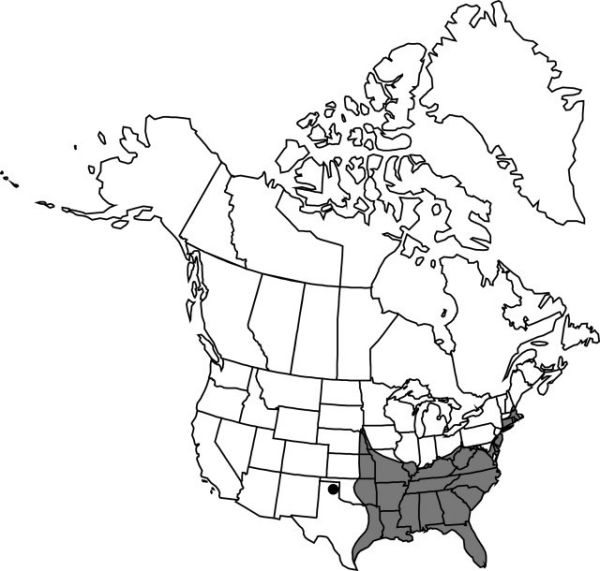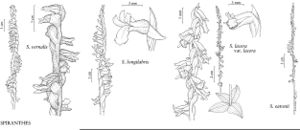Spiranthes vernalis
Boston J. Nat. Hist. 5: 236. 1845.
Plants 20–65 cm. Roots numerous, spreading, mostly to 1 cm diam., stout. Leaves persisting through anthesis, to 4–5, basal, reduced to sheathing bracts upward on stem, spreading, linearlanceolate, keeled, 5–25 × 1 cm. Inflorescences: spikes loosely to tightly spiraled, 3–7 or more flowers per cycle of spiral, sometimes nearly secund; rachis densely pubescent, trichomes articulate, pointed, capitate glands absent. Flowers nodding to somewhat ascending, white to cream, mostly gaping; sepals distinct to base, lanceolate, 6–10 × 2–3 mm; lateral sepals spreading; petals oblong, 6–9 × 2 mm, apex obtuse; lip creamy yellow centrally or some individuals with 2 brown-orange spots, ovate, 5–8 × 4 mm; veins of lip straight, branches parallel; basal calli conic, to 1 mm; viscidium linearlanceolate; ovary mostly 8 mm. Seeds monoembryonic. 2n = 30.
Phenology: Flowering Jan (Fla)–Oct (north).
Habitat: Dry to moist meadows, dune hollows, prairies, old fields, roadsides, cemeteries, lawns
Elevation: 0–1000 m
Distribution

Ala., Ark., Conn., Del., D.C., Fla., Ga., Ill., Ind., Iowa, Kans., Ky., La., Md., Mass., Miss., Mo., Nebr., N.H., N.J., N.Y., Ohio, Okla., Pa., R.I., S.C., Tenn., Tex., Va., W.Va.
Discussion
The habit of Spiranthes vernalis is variable: inflorescences range from secund to loosely and even densely coiled, and flower shapes vary as well. The most consistent diagnostic character is the presence in inflorescences of copious articulate, pointed trichomes that readily distinguish S. vernalis from similar species.
Selected References
None.
